
Magic shows are loved all around for the most part; the excitement, the wonder, the costumes, and the accessories make these performances quite thrilling. However, it is impossible to deny and ignore the fact that in order to be a magician, one must be skilled at the sleight of hand and be a master of illusion, and these things require a lot of practice, hard work, and a little talent.
Adults know that there are secrets behind every magic trick, and although a magician can never reveal them, we can... So here are the secrets behind 15 of the most well-known magic tricks out there!
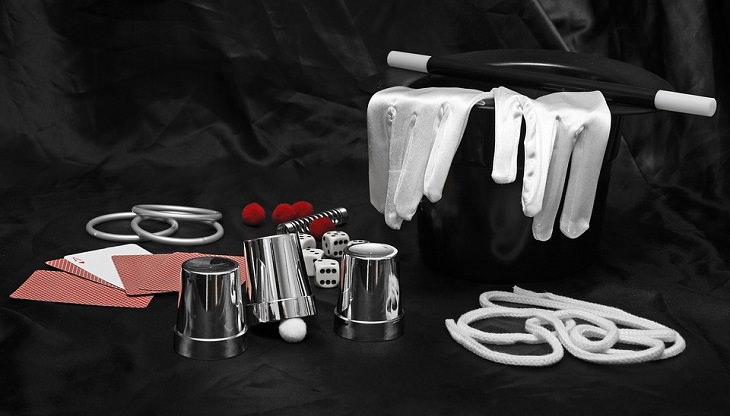
The trick begins with the magician sitting in a bag which the assistant then ties and places in a chest. The assistant then closes and locks the chest. At this point, the assistant stands on the chest, picks up a long, dark cloak, and with a wave of her hand the cloak falls to reveal the magician standing on the chest instead of her. After the magician reveals himself, he opens the chest and unties the bag to reveal the assistant inside, usually in a different outfit.
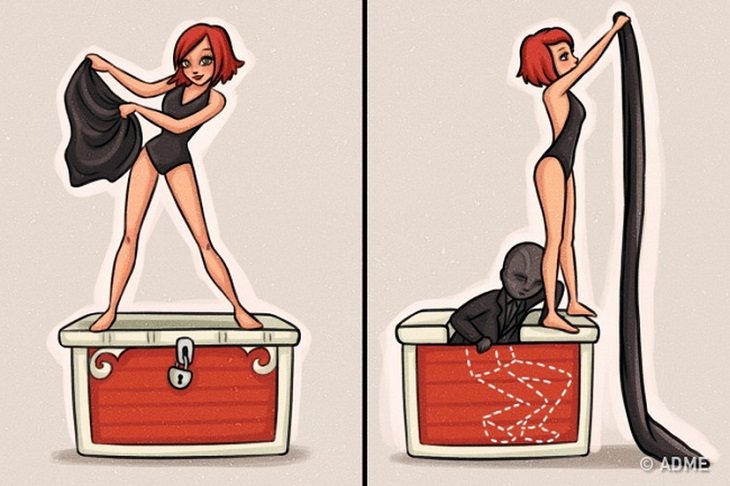
The trick is actually that the chest has no back, and the bag has a zipper for easy exit. During the magic trick, the assistant stands on the chest. As she picks up the cloak, the magician unzips himself and sneaks out the back. He then grabs the cloak from the assistant, allowing her to go hide inside it and change clothes. The more quickly, efficiently, and in unison the pair work, the more impressive the trick.
Levitation comes in many forms, and it’s considered one of the most popular and captivating magic tricks. In some cases, it is the magician who floats in front of a step or holds a cane, whereas, in others, it’s an object or an assistant.
In both cases, there’s a great deal of deception involved. When the magician floats himself, he or she steps out of one shoe and places it on the step. The empty shoe and pants leg is attached to the other leg, so they remain behind. Using the concealed leg, the magician slowly rises, and it looks like his feet are floating in the air.
In the case of levitating street performers and assistants, the illusion involves a concealed metal platform. See details of all these illusions in the video above.
Watching from the sidelines, this trick can seem very dangerous. But fear not, no one is in harm’s way. In this trick, the magician ties the assistant to a wooden board, most of the time turning it around, and steps away from it. After that, the magician takes the knives placed next to him and begins to cast them in the direction of the wooden board without hurting the assistant. To magnify the illusion, he does so with his eyes covered.
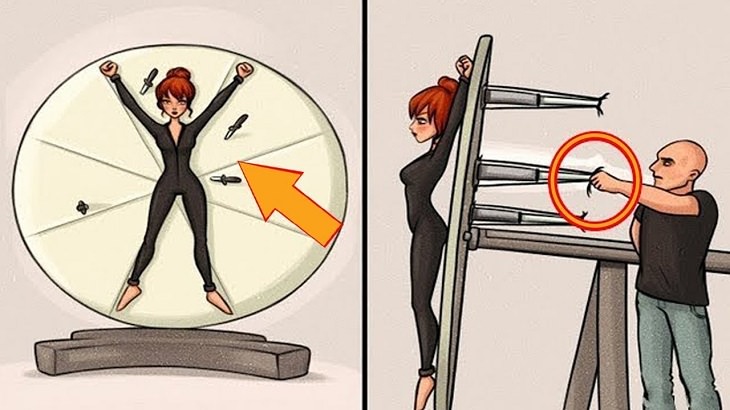
The magician isn’t actually throwing any knives at all. Instead, he hides them in a secret pocket so quickly that our eyes don’t catch the move. At the same time, another assistant stands behind the board and releases a mechanism that makes it seem as though a knife has hit it. The whole trick is done with such skill, speed, and coordination that it makes us believe actual knives are being thrown.
This magic trick was so popular that it became an idiom. Of course, we meant 'pulling a rabbit out of a hat.’ This common magic trick is not as difficult as it seems. In fact, the solution is deceptively easy even though it does require quite a lot of dexterity.
Fun fact: magicians use rabbits because they sit still and don’t make loud sounds.
The rabbit is hidden in a black cloth sac concealed under the table. When the magician shows the audience that the hat is empty, he or she quickly moves the bag with the rabbit from the hidden compartment into the top hat. The magician then places the top hat on the table, opens the sac in the hat, and pulls out the bunny from it.
In this trick, the assistant is placed in a very large box with only her head, hands, and feet sticking out from the front wall to the audience. The magician approaches her and begins to move the exposed parts making it seem as though her body is being stretched and warped. Then he returns the parts of her body back to their place, opens the box, and the assistant comes out safe and sound.
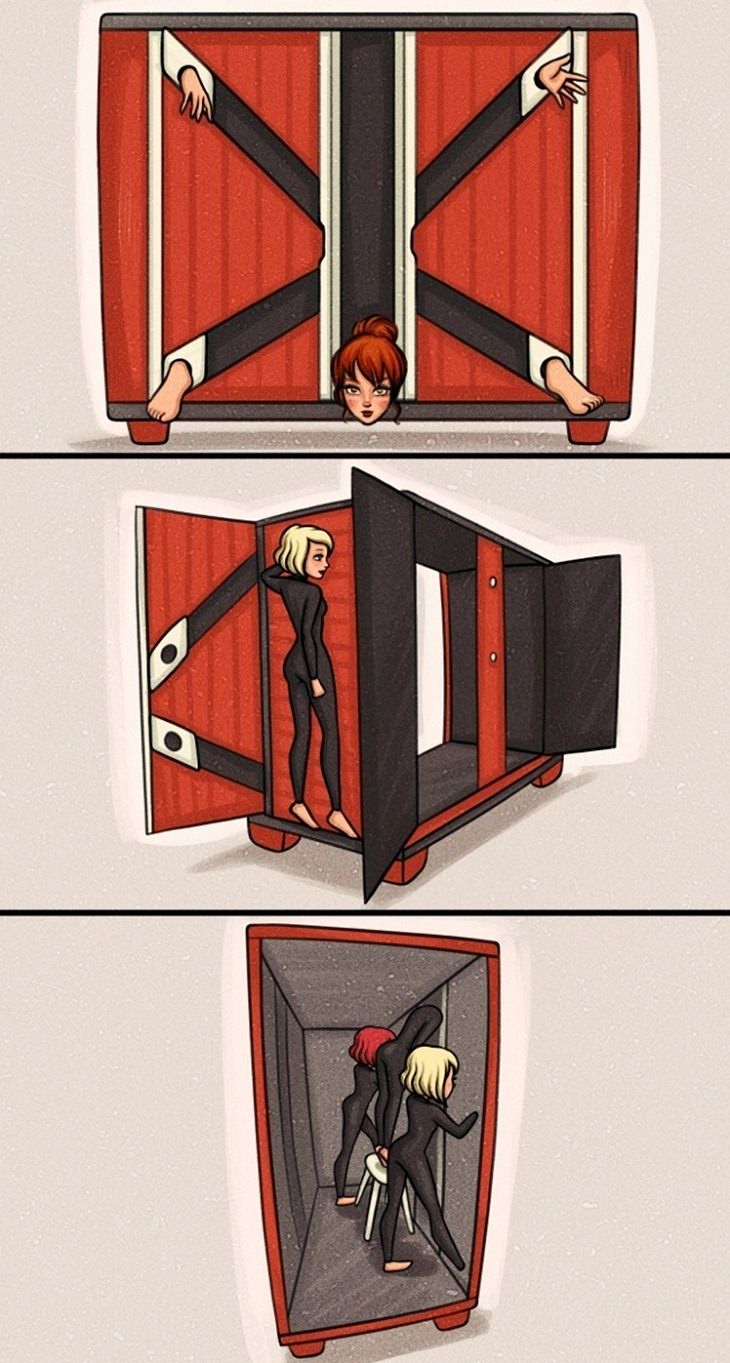
Here, too, the secret lies in the illusion; when the magician opens and closes the front and rear sides to show and prove to the audience that the box is empty, there are two other assistants hiding. Then they enter the box through side doors and each puts a hand and foot into the designated places, with each of the assistants having the same manicures and pedicures to make the audience believe that the parts of the body belong to only one assistant. By doing so, the magician is able to move the different parts of the body and confuse the audience.
The walking on water illusion is also quite famous on TV and in real life. It was made popular by magician Criss Angel. In many cases, it looks very convincing because assistants swim across or right under the magician’s path in the water.
It’s simpler than you think. In reality, the magician is walking on plexiglass platforms concealed in the water. Plexiglass is completely transparent and reflects light very similarly to water. So when you submerge it, it’s very difficult to see in water - especially from a distance. This video explains the trick in detail.
At the beginning of the trick, the magician shows us an empty box and a cage with two doves next to it. He runs his hands through the box to prove that there are no hidden spaces or anything else that might make us doubt the magic. Then the magician takes the two pigeons and puts them in a box, closes them, counts to three, opens the box, and the doves are nowhere to be found.
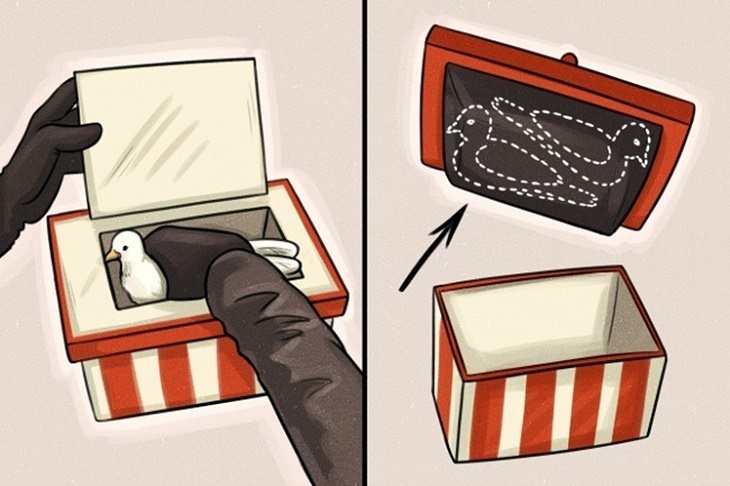
Don’t worry, the doves are safe, they are in a small hidden space where they can stay for a while. In fact, although the magician had shown us that there are no hidden spaces in the box, there is a secret chamber. The doves are placed into the box in the part we see, and when he opens the box once more, what we see is the hidden chamber.
David Blaine is famous for this magic trick where he turns a homeless man’s coffee into a cup filled with coins. As you might suspect, the cup used in this trick is no usual cup of coffee.
The coffee cup consists of two cups – one long and another shorter one - placed one in another. The smaller cup is filled with coins, and the taller cup has a sponge and a hole at the bottom. The cup is then topped off with coffee. When the magician pushes his finger inside the bottom of the taller cup, the coffee gets absorbed by the sponge, revealing the coins. As easy as that! Watch how this trick works in this video.
Here’s one trick you can easily try at home. When you rub your fingers together, smoke will be produced. Just make sure to wash your hands after the trick.
Smoke is produced when you dip your fingers in white phosphorus. This flammable substance can be found in a regular matchbox. So if you want to try this trick at home, cut out the matchbox striker sides with a pair of scissors. Then, place the cardboard pieces in a small bowl, fold them in half, and burn them.
Once the strips have burned and everything has cooled off, you’ll be left with a residue of white phosphorus. Dip your thumb and index finger in the white phosphorus, and then slowly rub the two fingers together to produce smoke.
This trick is always done in an open space when the magician is laid in a coffin, and the assistants bury him in the ground. A few seconds later, the magician manages to escape from this dangerous trap safe and sound. Not every magician performs this trick because of the risks involved, but if everything is done correctly, no one is hurt.
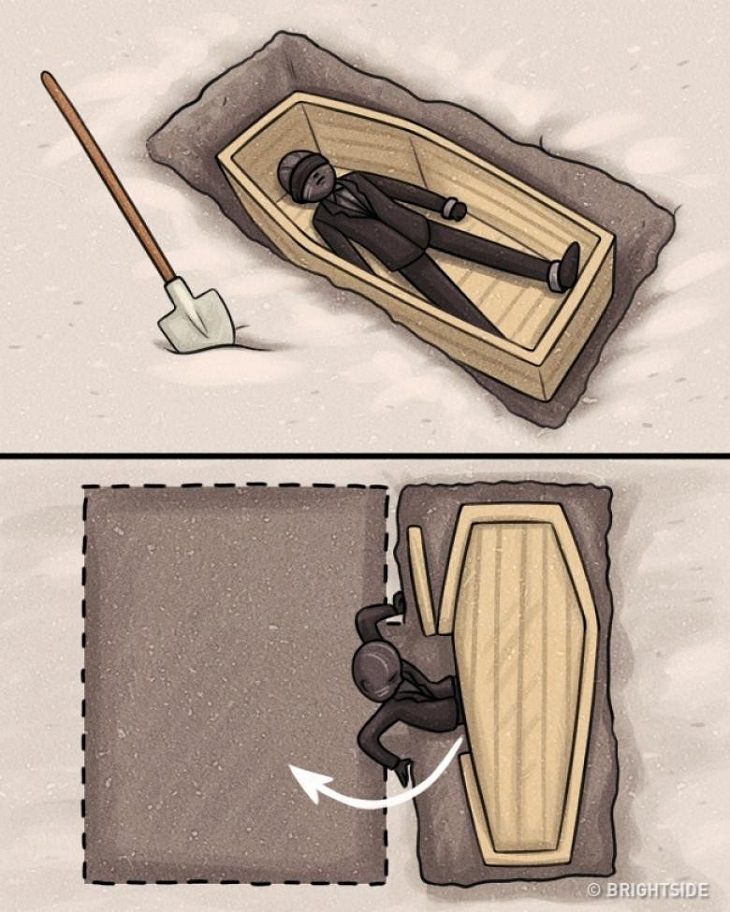
The coffin has a secret door that the magician uses to enter an underground room with oxygen and lighting. The burial plot and adjacent room are prepared ahead of time. Therefore, we are none-the-wiser, allowing us to accept the illusion that there is only the burial plot. This trick requires the magician to hold his breath in the coffin until it is completely covered. Using a side door in the coffin, he passes through the cover of the coffin to the side room. Then, by removing a few shelves, he steps out of the secret room to the soft-covered grave and emerges above the ground.
The vanishing coin is one of the first magic tricks many magicians learn. The premise is simple – a magician places a coin in his fist. When he opens the palm again, the coin is not there. In some versions, the magician closes the palm again, and the coin magically appears in the hand again.
The main trick in this one is that the coin never ends up in the closed fist, to begin with. Instead, the magician conceals the coin in the other hand and then transfers it into a pocket. Watch this trick in action in the video above.
At first glance, we may think that the magician is injuring himself in favor of the performance. With this trick, he takes an especially large needle and inserts it through his arm until he starts bleeding. When he penetrates the skin, he moves the needle in all directions. The truth, however, is a lot less gory.
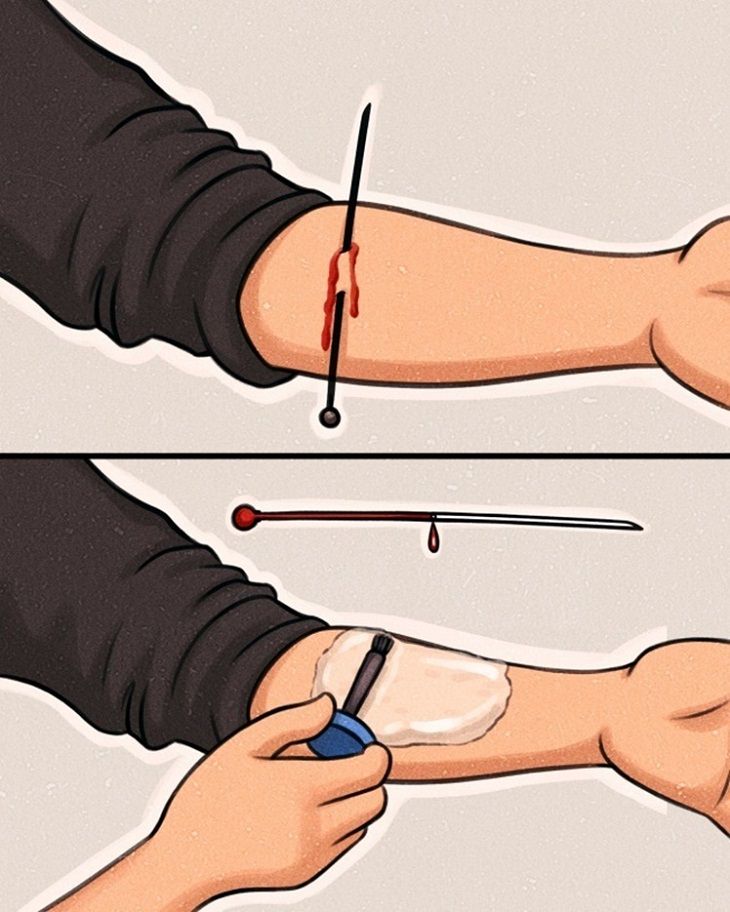
The needle isn’t penetrating the magician's arm at all. This trick is two-fold. The first part of the trick happens before the show. The magician coats his arm in a thick layer of rubber cement. When “piercing” his skin, he puts up a fight making it look difficult, although all he’s actually doing is rubbing it against his skin. When it seems the magician has gotten all the way through his arm he then pinches his skin together around the needle, allowing the rubber cement to act as glue.
The second part is the blood. The needle is actually hollow and the ball at the tip of it is rubber, before the show he uses the needle and rubber ball as a turkey baster and sucks fake blood into it. After “piecing” his arm, he presses the ball to release a tiny drop of fake blood, making for quite the gruesome illusion.
Here’s another classic trick! A spoon seems to melt in the magician’s hands. There are a couple of variations here too. In the first version, the spoon bends when the magician closes his fist. In another variation, the utensil gradually bends as the magician gently moves it, holding it with his index finger and thumb.
To perform the first version of the spoon-bending trick, the magician uses a small coin as a prop. At the beginning of the trick, the tip of the coin should be peeking out between the index and middle fingers. The handle of the spoon should be left on the table. As the magician starts “bending” the spoon in the first, the audience will mistake the coin for the spoon handle, and it will look as if you’re bending the spoon.
In the second variation, a special spoon augmented with a flexible middle is used to produce the illusion. Such a utensil can be purchased or made by hand using a spoon, a piece of straw, and some tape. To see an explanation of this trick, as well as a DIY bending spoon, watch the video above.
Most of us are familiar with this trick, and there are those who do it without calling themselves magicians. Sword swallowers need to be extremely skilled and careful, as they actually have to swallow the sword without hurting their mouth, esophagus, and abdomen. The swallowing is not done normally like swallowing food. In fact, natural instincts don’t exist here.

The sword needs to be swallowed in a specific direction so as not to damage the internal organs. To do this, magicians need to keep the pharynx and gullet in a straight line, which involuntarily relaxes the pharynx, closes the upper esophagus, and allows the sword to slide right into the esophagus, with the saliva acting as a lubricant in this process. Please don’t try this at home!
Do you remember David Blaine’s iconic trick where he pushes a card through a window? In the trick, a passer-by is asked to select a card and put it back in the deck. The magician then throws the deck of cards into a nearby window, and to everyone’s surprise, the selected card appears stuck on the other side of the glass. I was always curious to find out how he did it. Finally, I did, and I’m pretty excited to share the explanation with you too.
The secret of this trick is that the selected card has always been glued to the glass. However, the volunteer doesn’t notice it because he stands with his back to the window. The magician prompts the volunteer to select a specific card from the deck. And when he turns around to see what’s happening, voila – the card is right there in the window.